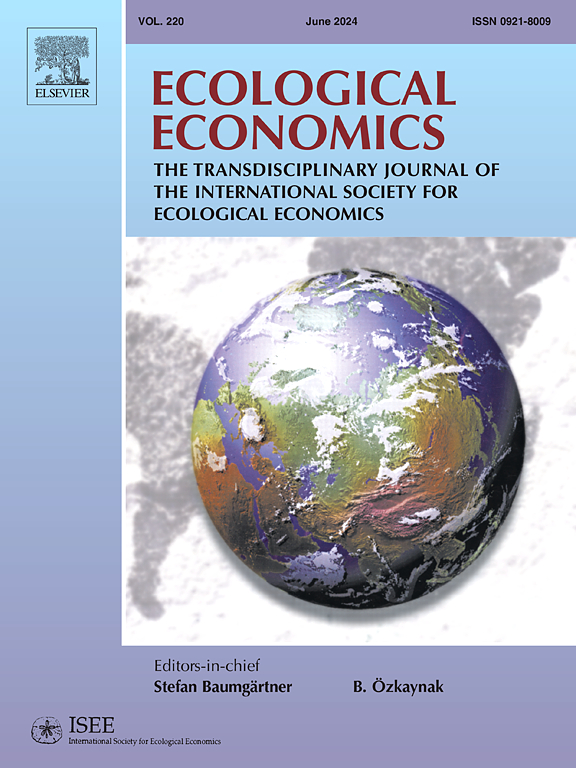CAP 绿色付款中的作物多样性标准对农场的经济和环境绩效都有影响吗?来自法国的准实验证据
IF 6.6
2区 经济学
Q1 ECOLOGY
引用次数: 0
摘要
本研究旨在揭示绿色补贴的作物多样性标准对农场经济和环境绩效以及土地利用方式的影响。为了提供因果证据,我们利用了 2013 年共同农业政策改革的自然实验,该政策为拥有 10 公顷(和 30 公顷)以上耕地的农民制定了更严格的作物多样性资格标准。更确切地说,我们在法国农场样本中采用了差异-不连续设计,并分别对高于和低于两个阈值的农场进行了比较。我们的研究结果表明,10 公顷左右的农场经历了显著的土地重新分配,作物多样性增加,而 30 公顷左右的农场则增加了作物数量。有趣的是,我们还发现,主要效应主要是由已经满足多样化要求的农场驱动的。这表明,作物多样性标准并没有带来太大的额外变化。本文章由计算机程序翻译,如有差异,请以英文原文为准。
Did crop diversity criterion from CAP green payments affect both economic and environmental farm performances? Quasi-experimental evidence from France
This study aims to shed light on the impact of the crop diversity criterion of green payments on farms' economic and environmental performances, alongside land use practices. In order to provide causal evidence, we exploit the natural experiment from the 2013 Common Agricultural Policy reform, which established stronger crop diversity eligibility criteria for farmers with over 10 ha (and 30 ha) of arable land. More precisely, we use a difference-in-discontinuity design on a sample of French farms and compare those respectively above and below the two thresholds. Our findings suggest that farms around 10 ha experienced significant land reallocation and an increase in crop diversity, while farms around 30 ha increase their number of crops. Interestingly, we also found that the main effects were primarily driven by farms that already met the diversification requirements. This suggests that the crop diversity criterion did not result in much additional change.
求助全文
通过发布文献求助,成功后即可免费获取论文全文。
去求助
来源期刊

Ecological Economics
环境科学-环境科学
CiteScore
12.00
自引率
5.70%
发文量
313
审稿时长
6 months
期刊介绍:
Ecological Economics is concerned with extending and integrating the understanding of the interfaces and interplay between "nature''s household" (ecosystems) and "humanity''s household" (the economy). Ecological economics is an interdisciplinary field defined by a set of concrete problems or challenges related to governing economic activity in a way that promotes human well-being, sustainability, and justice. The journal thus emphasizes critical work that draws on and integrates elements of ecological science, economics, and the analysis of values, behaviors, cultural practices, institutional structures, and societal dynamics. The journal is transdisciplinary in spirit and methodologically open, drawing on the insights offered by a variety of intellectual traditions, and appealing to a diverse readership.
Specific research areas covered include: valuation of natural resources, sustainable agriculture and development, ecologically integrated technology, integrated ecologic-economic modelling at scales from local to regional to global, implications of thermodynamics for economics and ecology, renewable resource management and conservation, critical assessments of the basic assumptions underlying current economic and ecological paradigms and the implications of alternative assumptions, economic and ecological consequences of genetically engineered organisms, and gene pool inventory and management, alternative principles for valuing natural wealth, integrating natural resources and environmental services into national income and wealth accounts, methods of implementing efficient environmental policies, case studies of economic-ecologic conflict or harmony, etc. New issues in this area are rapidly emerging and will find a ready forum in Ecological Economics.
 求助内容:
求助内容: 应助结果提醒方式:
应助结果提醒方式:


